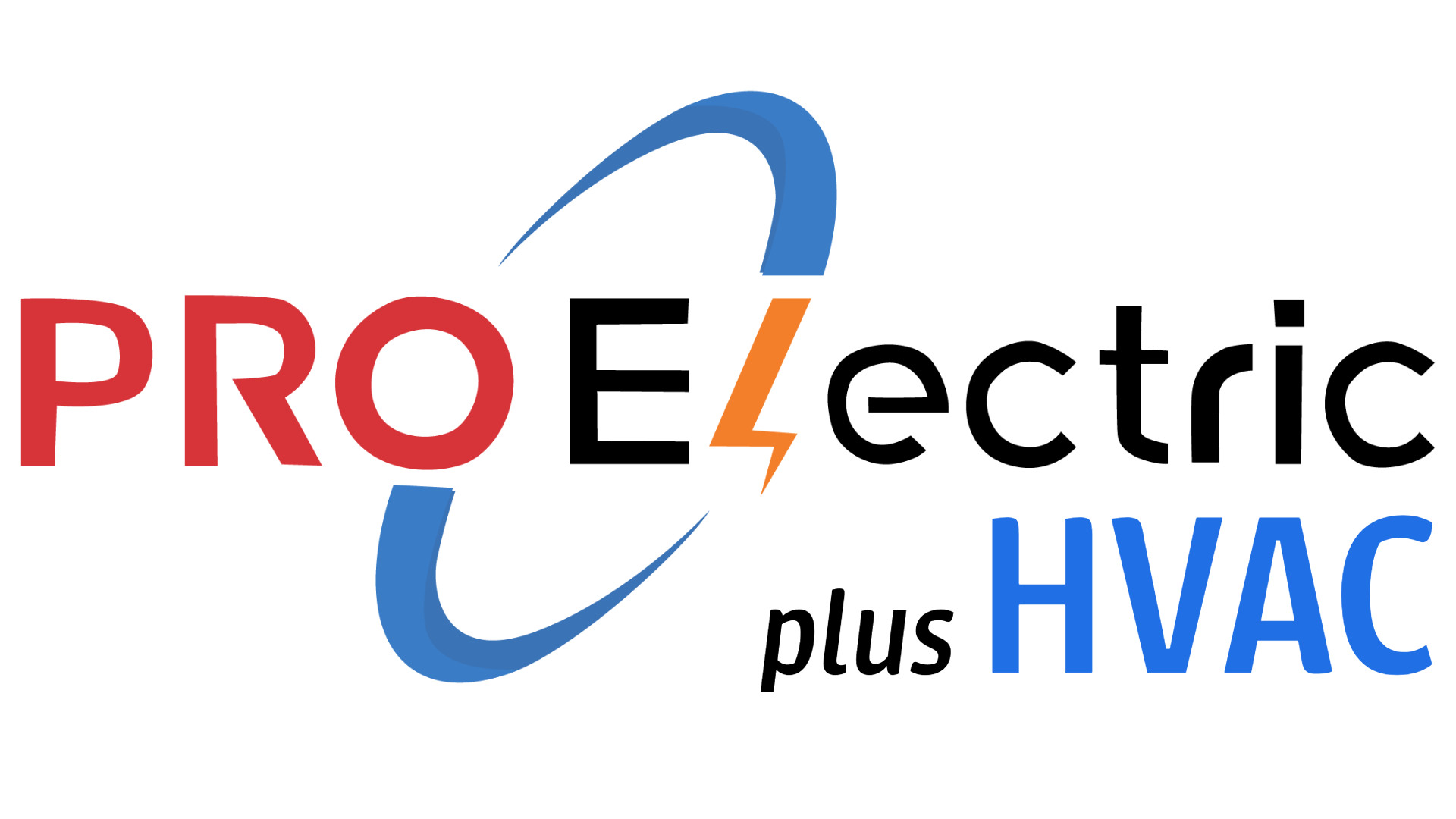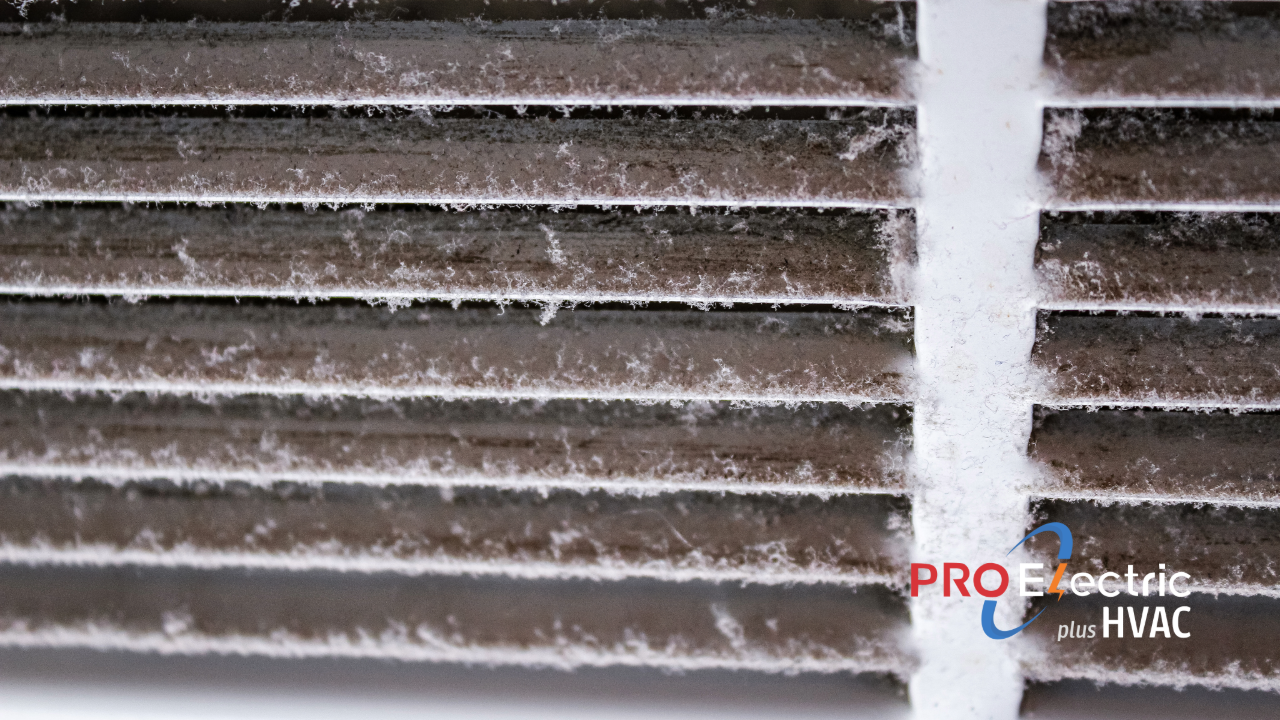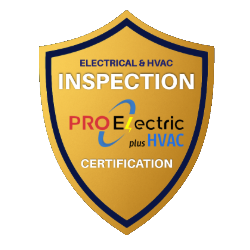How and Why Your HVAC Condensate (and Dehumidifier) Drains Get Clogged – and How to Prevent It
Hey there, I’m Peter, a residential HVAC technician with PRO Electric plus HVAC in Falls Church, VA. In my line of work, I see a lot of air conditioners and dehumidifiers with clogged condensate drain lines.
It’s a common problem that can sneak up on homeowners.
Let me explain how and why these drains get gunked up, the dangers of ignoring a clog (like mold around your AC unit/vents and water damage!), and some practical tips to keep those drain lines clear.
I’ll also share why seasonal professional maintenance is so important to avoid these messy situations.
How Condensate Drain Lines Work (The Basics)
Every central AC system (and whole-home dehumidifier) has to deal with moisture. When your air conditioner runs, it cools warm air from your home. As the warm air passes over the cold evaporator coil, the humidity in the air condenses into water droplets – kind of like water beading up on a cold drink glass. Those droplets drip into a condensate drip pan located right under the coil. From there, gravity (or sometimes a small pump) sends the water out of your house through a condensate drain line – usually a PVC pipe that leads to a floor drain or outside your home. This way, the water is safely removed and doesn’t stay in your HVAC system.
Dehumidifiers work the same way on a smaller scale. A standalone dehumidifier also pulls moisture out of the air – water collects either in a bucket/reservoir or drains out via a hose. If that drain hose gets blocked or the bucket isn’t emptied, water will back up in the dehumidifier. So whether it’s your AC or a dehumidifier, the goal is to give that condensed water a clear path out of the system. When everything is working right, you never even notice the water – it just trickles away and evaporates harmlessly outside.
Why Do Condensate and Dehumidifier Drains Get Clogged?
Even though the condensate drain is just for clean water, gunk can absolutely build up in there over time. Clogs happen for a few main reasons:
- Algae and Slime Growth: The drain line and drip pan are damp, and often warm – basically the perfect little habitat for algae, mold, and mildew. Over time, a slimy film of algae or fungus can grow inside the pipe. I’ve opened up drain lines before that were coated with biofilm (“slime”) that eventually plugged the line completely. In fact, the warm, wet conditions in the condensate pan can breed algae that forms clogs. This microbial gunk is one of the most common culprits for a clogged AC drain.
- Dust and Debris: Your HVAC system moves a lot of air, and with that air comes dust, lint, and other fine debris. A good filter catches most of it, but some dust still settles onto the wet evaporator coil and drip pan. When that dust mixes with water, it can create a muddy sludge that slowly flows into the drain line. Over months and years, this sludge can accumulate and narrow the pipe until it blocks. (Also, if you forget to change your air filter regularly, even more dust will collect and wash into the pan – feeding that algae and creating clogs faster.)
- Rust or Mineral Scale: If parts of your drain pan or drain line are metal, they can rust over time from constant exposure to water. I’ve seen old metal drip pans that flaked off rust into the drain line. Additionally, mineral deposits from hard water can build up. These bits of rust or scale aren’t common in newer plastic drain pans, but in older systems they can contribute to blockages.
- Kinks or Poor Slope: The drain line needs to slope downward so gravity can carry the water out. If the line was installed with a dip or upward slope somewhere (or if a flexible hose gets kinked), water can pool at that spot. Standing water encourages more algae growth and also allows sediment to settle and clog. Likewise, any section of pipe that sags (in an attic, for example) can become a trouble spot for clogs.
- Miscellaneous Debris: Occasionally, I’ve found odd things causing clogs – like a stray bit of insulation or a small insect nest at the pipe outlet. Outside drain terminations can also get blocked by dirt or leaves. But most often, it’s organic slime and crud from inside that does it.
Remember, dehumidifier drain hoses suffer from the same issues. If you have a hose running from a basement dehumidifier to a sink or sump, that hose can grow algae or mold inside too. Regular water + darkness = slime, unfortunately. So all these causes apply to any condensate or dehumidifier drain line in the home.
What Happens When a Drain Line Backs Up?
A clogged condensate drain might not sound like a big deal, but the consequences can be serious if it’s not caught in time. I’ve seen minor clogs turn into expensive headaches. Here are the main dangers:
- Water Overflow and Damage: This is usually the first sign of trouble – water that should be draining away instead overflows the drip pan. In an attic or closet installation, that water can pour onto your ceiling, walls, or floor. The result? Damaged drywall, soaked carpet, even collapsed ceilings in extreme cases. The HVAC unit itself can get waterlogged and damaged too. In fact, a plugged drain line often leads to water spilling out and harming not only the AC unit but also nearby structures like walls, ceilings, and floors. Repairing water damage can be costly, and nobody wants a surprise indoor waterfall from their AC.
- Mold and Mildew Growth: Standing water and constant moisture around your HVAC system create a breeding ground for mold. If the condensate line is clogged and water stagnates in the pan, mold and mildew will start growing there and even inside your unit. I’ve encountered units where a thick layer of biofilm and mold was coating the inside of the drain pan and coil area due to chronic clogs. Even worse, that mold can spread beyond the unit: a clogged drain means moisture gets trapped and can allow mold to colonize your ductwork or vent registers. Mold is a common byproduct of a clogged condensate drain – the trapped moisture lets airborne spores take hold and grow, sometimes even spreading into the supply ducts and throughout your indoor air . You might notice a musty odor from the vents or even visible black growth around AC vent covers when this happens. Aside from the nasty smell, mold spores in your air can cause respiratory issues or allergies for your family.
- Poor Cooling Performance or AC Shutoff: Many modern HVAC systems have a safety float switch in the drain pan or line. If water backs up, the float switch will trip and shut off your AC system to prevent flooding. It’s good that it prevents damage, but now you’re suddenly without cooling until the clog is fixed. If your AC ever mysteriously stops running, a tripped float from a clogged drain could be why. (A telltale clue is if you also find water in the pan.) Even if you don’t have a float switch, an overfilled drip pan can submerge parts of the blower or other components, potentially causing the AC to malfunction or short out. At the very least, a backed-up drain makes your AC less efficient because that excess water can mess with the airflow or even cause the system to shut down intermittently. Bottom line: a clog can literally stop your AC in its tracks as a protective measure.
- Unhealthy Indoor Air: Beyond mold, stagnant water can harbor bacteria too. The area around a clogged drain might become slimy and breed germs, which can then get circulated by the HVAC system. Also, high humidity from an AC that can’t drain properly might make your whole house feel clammy and promote dust mite growth. Overall, a clog can hurt your indoor air quality.
As you can see, a little clog can cause a lot of trouble – from water damage to moldy air. This is why it’s crucial to keep an eye on your condensate drains.
Tips to Prevent Clogged Drain Lines
The good news is there are plenty of simple steps you can take to prevent drain clogs. As an HVAC tech, I always encourage homeowners to be proactive, especially during the cooling season. Here are some practical tips:
- Pour a Vinegar Flush Monthly: One easy home remedy is flushing the drain line with white vinegar. Vinegar is mildly acidic and kills algae and mold but is safe for your pipes. I tell homeowners to pour about a cup of white vinegar into the condensate drain clean-out (usually a T-shaped vent with a cap on the line) about once a month during peak AC season. Let it sit for 30 minutes and then flush with water. This helps dissolve slime and keeps the line clear. (If you really hate the vinegar smell, a dilute bleach solution or hydrogen peroxide can work too – but vinegar is my go-to since it’s safer and effective.)
- Check the Drain Pan Occasionally: Take a peek at the drip pan (you might need to remove a panel). It should be pretty dry or just have a thin film of water when the AC is running. If you see standing water or slime in the pan, that’s a red flag for a clog forming. Clear any obvious debris (like gunk or insects) out of the pan. You can wipe the pan with soap and water to remove biofilm. Also ensure the pan is not rusted through if it’s metal.
- Make Sure the Drain Line is Sloped and Secure: During your seasonal checks, inspect as much of the drain pipe as you can see. It should slope downward continuously to its outlet. If you find any sagging sections, support them so they drain properly. Also check the end of the drain line (where it drains outside or into a floor drain) – keep that outlet clear of mud, mulch, or debris so water can flow freely.
- Keep the Air Filter Clean: A clogged air filter allows extra dust to cake onto your AC’s coil and pan. All that dust becomes food for algae and mold in the drain. By replacing or cleaning your HVAC filter regularly (typically every 1-3 months), you reduce how much organic material ends up in the condensate water. This simple step cuts down on slime buildup big time. (Plus your AC will thank you with better efficiency and performance.)
- Consider Pan Tablets or Strips: There are inexpensive antimicrobial tablets/strips you can put in your condensate pan that slowly release chemicals to prevent algae growth. These can be useful, especially in very humid climates. Just follow the product instructions – they usually last a few months. It’s a “set it and forget it” measure to keep the slime away.
- Flush Your Dehumidifier Too: If you use a hose to continuously drain your dehumidifier, treat it like an AC drain line. Periodically flush the dehumidifier’s drain hose with vinegar or hot soapy water to clear any biofilm. And clean the dehumidifier’s collection bucket/reservoir often to prevent mold. This ensures the dehumidifier keeps draining properly and doesn’t grow its own funk.
- Know the Signs of a Clog: Be alert to warning signs. If you notice water pooling around your indoor unit, a musty mildew smell when the AC runs, or your AC shuts off unexpectedly, check that condensate line and pan. Catching a partial clog early can prevent a disaster. Often, a wet/dry vacuum applied to the drain line outlet can suck out a clog if it’s starting to form.
- By following these steps, you’ll greatly reduce the chance of ever experiencing a condensate backup. A little bit of DIY maintenance goes a long way to keep the drain line clear.
The Importance of Seasonal Professional Maintenance
While homeowner tips are essential, nothing replaces a thorough inspection by a professional HVAC technician. I might be biased, but having a pro check your system at least once or twice a year (for cooling and heating tune-ups) is just smart home ownership. During a seasonal maintenance visit, we at PRO Electric plus HVAC always inspect and clear the condensate drain lines as part of our checklist. We have special tools to flush or vacuum out the drain line and we make sure the drip pan and coil are clean. If there’s any algae starting to grow, we’ll catch it and treat it early.
Professional techs also test that important float switch (if your system has one) to ensure it will shut off the AC if the water rises too high. We verify the drain slope is correct and can even install upgrades like extra drain safeguards if needed. Another big thing is we look at your system overall – sometimes a clog is a symptom of another issue (for example, an extra-dirty coil freezing up and then thawing rapidly, overwhelming the drain). We can identify and fix those root causes too.
Perhaps most importantly, regular maintenance keeps your entire HVAC system running efficiently and safely, not just the drain. You’ll get better performance, lower energy bills, and longer equipment life. And you avoid nasty surprises like mold infestations or water damage. As the saying goes, an ounce of prevention is worth a pound of cure.
In my experience, homeowners who invest in annual HVAC maintenance rarely have to deal with severe drain clogs. We help stop the problems before they start. For example, simply keeping the condensate line clean prevents the conditions that lead to mold growth and leakso. It’s cheaper and easier to maintain the system than to do emergency water cleanup or mold remediation later.
Wrapping Up
Condensate and dehumidifier drain clogs might not be top-of-mind for most people, but as a technician who’s seen all the outcomes, I can’t stress enough how important it is to keep these drains clear.
By understanding how your AC’s drain system works and taking some preventative steps, you can avoid the nightmare of moldy vents or water damage from an overflowing AC.
A little attentiveness – and partnering with a good HVAC pro for regular check-ups – will ensure your home stays cool, dry, and safe from mold all summer long.
If you’re ever unsure about how to maintain your AC or you suspect a clog, you can always contact us at PRO Electric plus HVAC.
We’re here to help keep your system running smoothly and your home comfortable, with no moldy surprises. Stay cool and take care of that condensate!



